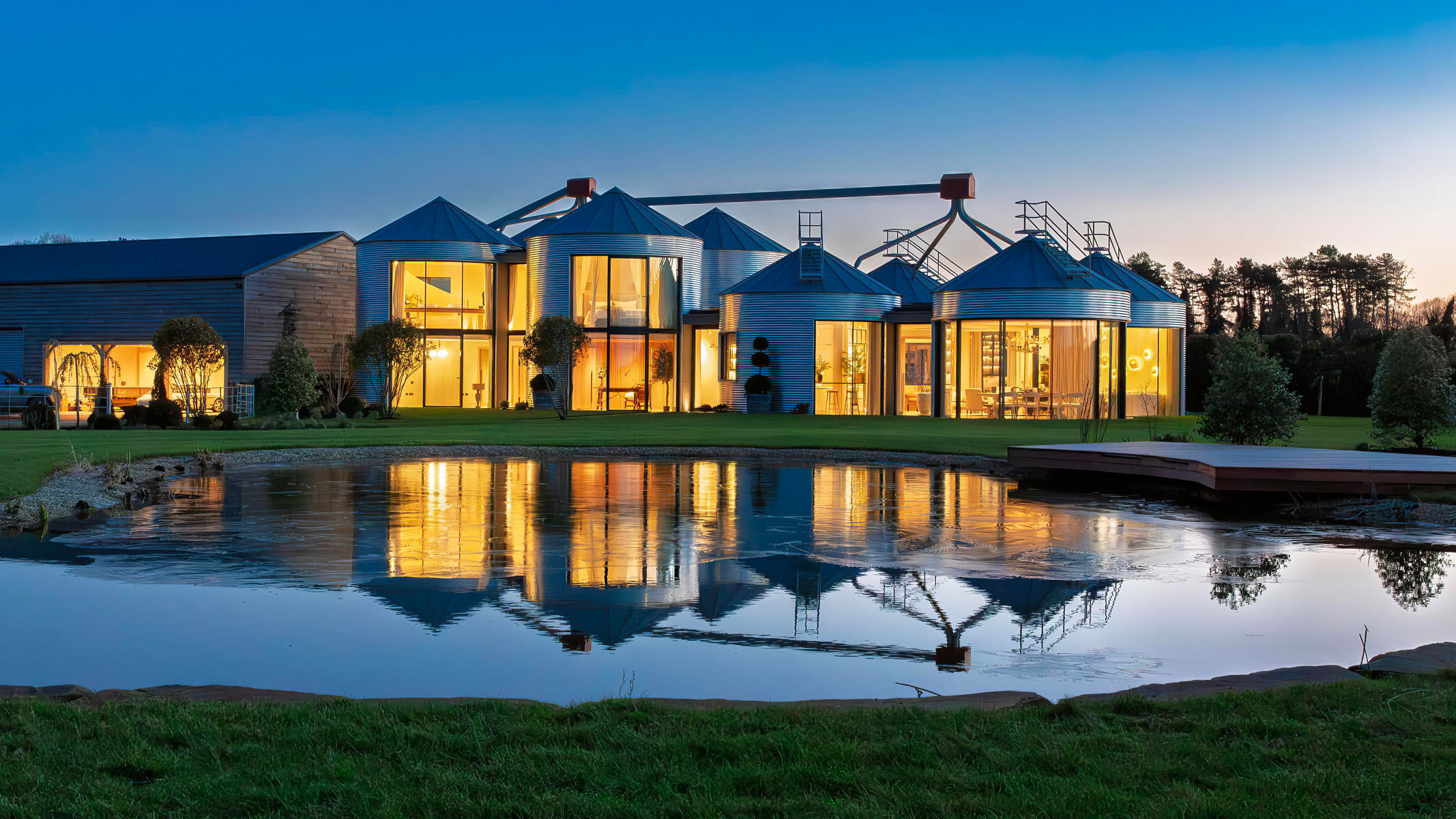Ten secrets of Surrey
Pippa Cuckson shares ten of the lesser-known landmarks of Surrey

A vintage experience Denbies wine estate
With 265 acres of vines, Denbies, near Dorking (01306 876616; www.denbies. co.uk), is England's largest single wine estate, honoured for both produce and ‘visitor experience'. The farm traces its history back to 1754, although its most notable occupant was Thomas Cubitt, builder of much of London, from 1850 to 1855. Businessman Adrian White bought it from Cubitt's descendant, Lord Ashcombe, in 1984, and was encouraged into winegrowing by Dorking resident Prof Dick Selley, the celebrated geologist, who likened its soil to the Champagne area of France. Local itineraries can include Box Hill, which will feature in the London 2012 Olympic road cycle races, and Polesden Lacey, home of the Edwardian socialite Mrs Ronald Greville.
A noted music centre Farnham
The market town of Farnham has managed to keep the Georgian sweep of Castle Street, its imposing downhill gateway, clear of chainstore ugliness. The tenor Peter Pears was born here and his life companion, Benjamin Britten, called Farnham ‘the most musical town in the south'. In the 1960s, it boasted two major choral societies, a pioneering competitive youth festival and the world-famous Tilford Bach Society. The title is even truer now, with London-standard recitals every week and Farnham's own Snape-inspired Maltings conversion, recalling the town's heritage in hop-growing. It still claims more pubs per capita than any other town, including the William Cobbett, birthplace of its namesake. Adjacent forest Alice Holt is now part of the South Downs National Park.
Racing's business end Lingfield racecourse
Epsom and Sandown have the bigger race meetings, but Surrey's other track, ‘leafy Lingfield (01342 834800; www.lingfieldracecourse. co.uk), is well worth a second look after major investment, such as an on-site Marriott Hotel; more spending may follow with the takeover by the billionaire Reuben brothers. Lingfield pioneered the now global culture of Flat racing on synthetic Polytrack in 2001, and although much of its fixture list is commercial, it hosts an important Derby trial in May and decent winter jumping on turf.
Into the wild Wisley Common
Sign up for the Country Life Newsletter
Exquisite houses, the beauty of Nature, and how to get the most from your life, straight to your inbox.
Flanking the RHS gardens, Wisley Common, Ockham and Chatley Heath are among 22,240 acres of reserves managed by the Surrey Wildlife Trust (www. surreywildlifetrust.org). Non-native ‘monster' carp-one a massive 31lb-made headlines when removed from Wisley's Boldermere Lake. Although severed by the M25 and A3, the commons host 20 species of dragonflies and damselflies, nightjars and hobbys. Chatley's Semaphore tower, built in 1822 by the Admiralty, is the only restored signaling tower between London and Portsmouth.
Pioneering farm shop Secretts farm shop
The appropriately named Secretts (01483 520500; www.secretts.co.uk) opened as a farm shop in Milford in 1937, long before the concept became fashionable. Its food hall occupies the old stables, and there's a garden centre and pick-your-own. Frederick Secrett founded the business in 1908, borrowing £1,000 to buy 20 acres at Kew. In the 1960s, Milford sent 50 tons of vegetables a day to Covent Garden, and was the first grower to put spinach in supermarkets, as well as pioneering gourmet leaves, such as wild rocket.
Pianos with history Hatchlands Park
Often overshadowed by Clandon, Hatchlands Park (01483 222482; www.cobbecollection. co.uk) has the earliest-known Robert Adam interior (commissioned by Admiral Edward Boscawen, hero of the Battle of Louisburg), plus Repton landscapes and a parterre by Gertrude Jekyll, Surrey's original celebrity gardener. In 1987, the National Trust leased Hatchlands as a family home to the Anglo- Irish art historian Alec Cobbe. He brought along the extraordinary collection begun by Archbishop Charles Cobbe (1686-1765), including a life study of William Shakespeare. Mr Cobbe also has Europe's largest collection of composer-related, playable keyboard instruments (38), including a Broadwood and Pleyel both played by Frederic Chopin.
* Subscribe to Country Life and save £1 per week
Devilish views The Devil's Punchbowl
This heathland amphitheatre of the Devil's Punchbowl-supposedly created by the Devil wilfully throwing up great handfuls of earth, but actually the result of erosion- needs no introduction. The ancient Hindhead commons to which it was rejoined with the opening of the A3 (London-Portsmouth road) tunnel provide unexpected and equally commanding views-from High Button (ideally from the back of a horse) and Gibbet Hill, from which the City of London's ‘Gherkin' is visible. At 892ft above sea level, Gibbet is Surrey's second-highest point after Leith Hill, deriving its mawkish name from the display area for executed highwaymen. Its Celtic cross-a tad sorry compared with Leith's Gothic tower-was purportedly erected in 1851 to dispel evil spirits. The Punchbowl itself-inspiration for sometime local residents Arthur Conan Doyle, Alfred, Lord Tennyson, George Bernard Shaw and children's novelist Monica Edwards-is most dramatic in winter light, although a further upturn in summer visitors is expected, exploring new National Trust walks created by the removal of tarmac (01428 681050; www.nationaltrust.org.uk).
Pools of contemplation Albury Silent Pool
Agatha Christie faked her disappearance nearby, and the young Prince John allegedly startled a maiden here and caused her and her brother to drown. Despite these dramas spring-fed Silent Pool, near Albury (a village notable for quirky chimneys), is a haven for contemplation, kingfisher-spotting and romantic picnics-albeit alfresco, as the old boathouse was damaged by tea-lights accidentally left in the rafters. Ideal for recovery after a walk round Newlands Corner, whose name seriously misleads about one of the most dramatic escarpments in the Surrey Hills. Have supper and local ale at the highly rated Stephan Langton Inn (named after a 13thcentury Archbishop of Canterbury) in the hamlet of Friday Street (01306 730775; www.stephanlangtonpub.co.uk) or drive to Shere's famous White Horse (01483 202518), a smugglers' pub dating from 1425.
Cistercian gem Waverley Abbey
The beguiling ruins of Waverley Abbey, near Farnham, represent England's first Cistercian monastery, founded in 1128; in 1388, its monks used massive local oak to build the Great Barn at Wanborough five miles away by the Hog's Back. The later manor house (www.english-heritage.org.uk), also open to the public, was a centre for spy training in the Second World War, although local rumour has it that femme fatales brought in to test incumbents found it all too easy to extract secrets. A further antidote to large-house overload can be found at National Trustmanaged Oakhurst Cottage, a 16th-century labourer's cottage at Hambledon (01483 208936) (handy for Winkworth Arboretum).
Hidden in the trees Windlesham Arboretum
Windlesham Arboretum (not to be confused with Winkworth) is a gem, privately owned but with two public footpaths. It's so well screened from the M3 that only a handful of locals use it-actor Kenneth Branagh has been spotted walking his dog. The late William Spowers established it in 1957, but the trees look astonishingly mature. There is an eclectic collection of follies and bridges from a previous life. Note, there's no parking adjoining it.
** Image: http://forum.surrey-online.co.uk
Country Life is unlike any other magazine: the only glossy weekly on the newsstand and the only magazine that has been guest-edited by HRH The King not once, but twice. It is a celebration of modern rural life and all its diverse joys and pleasures — that was first published in Queen Victoria's Diamond Jubilee year. Our eclectic mixture of witty and informative content — from the most up-to-date property news and commentary and a coveted glimpse inside some of the UK's best houses and gardens, to gardening, the arts and interior design, written by experts in their field — still cannot be found in print or online, anywhere else.
-
 Uniquely unique? The Yorkshire grain silos transformed into a home that's a symphony in glass, steel and curves
Uniquely unique? The Yorkshire grain silos transformed into a home that's a symphony in glass, steel and curvesAmid the beautiful countryside of North Yorkshire, on the edge of the Castle Howard Estate, The Silos is a property for which the word 'house' simply doesn't cut it. And that's not the only way in which it's made us throw out the dictionary.
-
 Polluting water executives now face up to two years in prison, but will the new laws make much of a difference?
Polluting water executives now face up to two years in prison, but will the new laws make much of a difference?The Government has announced that water company executives caught covering up illegal sewage spills could now be imprisoned for two years, under new laws — but many still have their doubts.